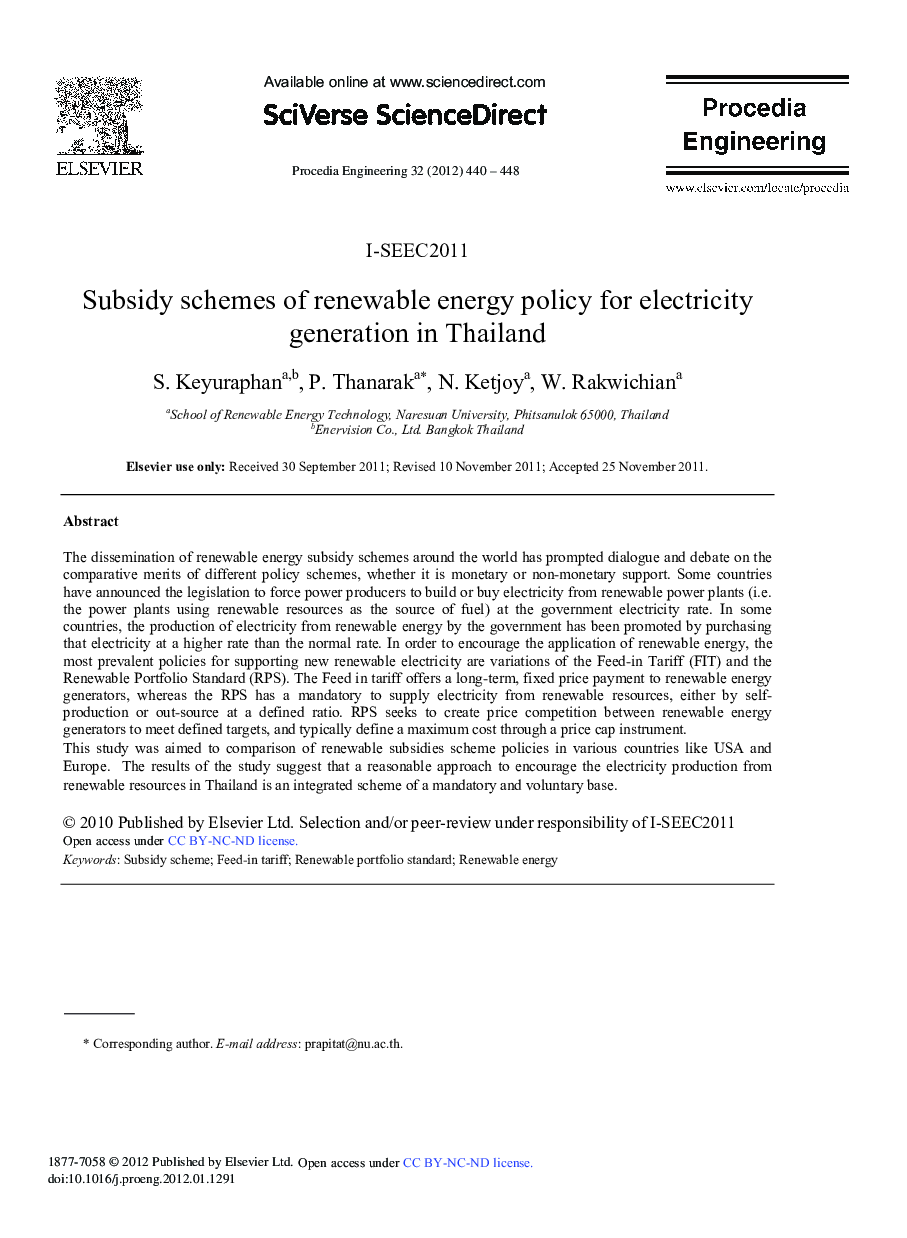| Article ID | Journal | Published Year | Pages | File Type |
|---|---|---|---|---|
| 862843 | Procedia Engineering | 2012 | 9 Pages |
The dissemination of renewable energy subsidy schemes around the world has prompted dialogue and debate on the comparative merits of different policy schemes, whether it is monetary or non-monetary support. Some countries have announced the legislation to force power producers to build or buy electricity from renewable power plants (i.e. the power plants using renewable resources as the source of fuel) at the government electricity rate. In some countries, the production of electricity from renewable energy by the government has been promoted by purchasing that electricity at a higher rate than the normal rate. In order to encourage the application of renewable energy, the most prevalent policies for supporting new renewable electricity are variations of the Feed-in Tariff (FIT) and the Renewable Portfolio Standard (RPS). The Feed in tariff offers a long-term, fixed price payment to renewable energy generators, whereas the RPS has a mandatory to supply electricity from renewable resources, either by selfproduction or out-source at a defined ratio. RPS seeks to create price competition between renewable energy generators to meet defined targets, and typically define a maximum cost through a price cap instrument. This study was aimed to comparison of renewable subsidies scheme policies in various countries like USA and Europe. The results of the study suggest that a reasonable approach to encourage the electricity production from renewable resources in Thailand is an integrated scheme of a mandatory and voluntary base.
